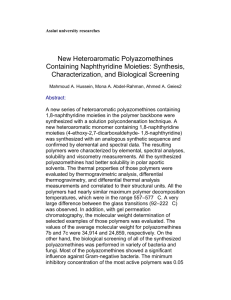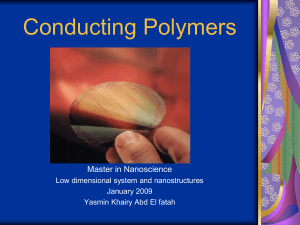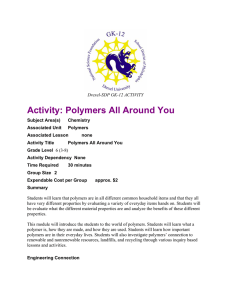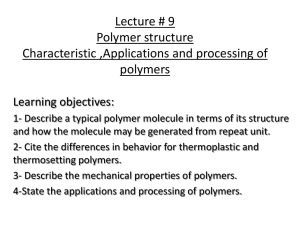Conductive Polymers & Plastics: Properties, Applications
advertisement
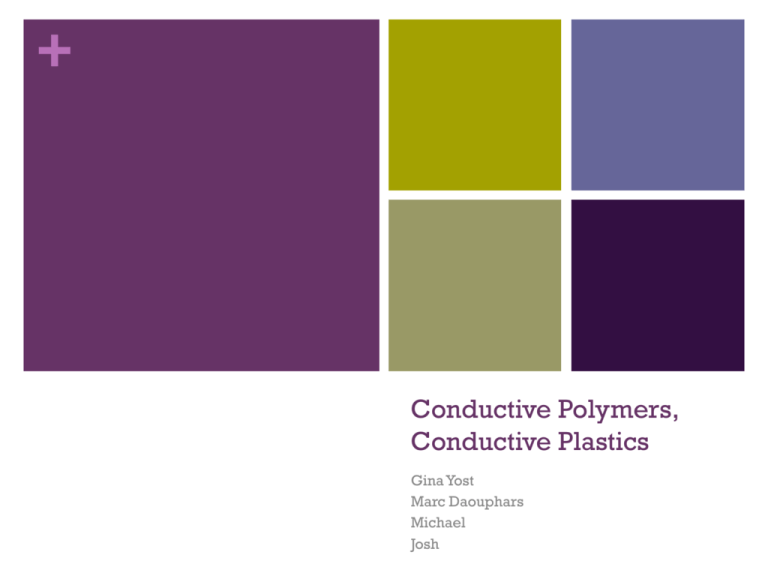
+ Conductive Polymers, Conductive Plastics Gina Yost Marc Daouphars Michael Josh + About The polyaniline family of conjugated polymers is used throughout the world. It has a conduction mechanism that makes it different from other polymers. It is also very stable when in the presence of oxygen and water. Polymers consist of alternating single and double bonds, called conjugated double bonds Used for surrounding copper wires and manufacturing the outer structures of electrical appliances that protect humans from direct contact. + About Polymer called ‘polyactylene’ can become highly electrically conductive after undergoing a modification process called doping Doping is a process where the plastic has to be disturbed – either by removing electrons from (oxidation) or inserting them into (reduction) the material Oxidation with halogen (known as p-doping) Reduction with alkali metal (known as n-doping) In becoming electrically conductive, a polymer has to imitate a metal, that is, its electrons need to be free to move and not bound to the atoms. Polyactylene is the simplest possible conjugated polymer. + Positives of Polymers Conductive Polymers are: Good insulating properties Good for environment stability Invented as an accident Inexpensive functionally versatile lightweight + Health Hazards Toxic raw materials Hazardous processing conditions + Doped Polymer Explained This game illustrates a doped polymer. The pieces cannot move unless there is at least one empty “hole”. In the polymer each piece is an electron that jumps to a hole vacated by another one. This creates a movement along the molecule – an electric current. + Examples/Applications High-capacity batteries Adhesives Artificial muscles Coatings, paints, inks Biosensors Touch screen LEDs Stylus Solar cell > solar windows Medicine delivery Photographic film + Properties Density Temperature Hardness, strength, and machinability solubility + Suppliers http://www.thomasnet.com/products/conductive-polymers96084314-1.html http://www.tekra.com/plastic-films-coated-plastic-filmsadhesive-products + Project Examples http://www.instructables.com/id/Pneumatic-Muscles/ http://www.instructables.com/id/How-to-make-air-muscles!/ + Other Sources http://www.chem1.com/acad/webtext/states/polymers.html https://www.youtube.com/watch?v=UjMbwS0LOkU http://www.ch.ic.ac.uk/local/organic/tutorial/steinke/4yrPol yConduct2003.pdf http://www.slideshare.net/gaurav2481/conducting-polymers






